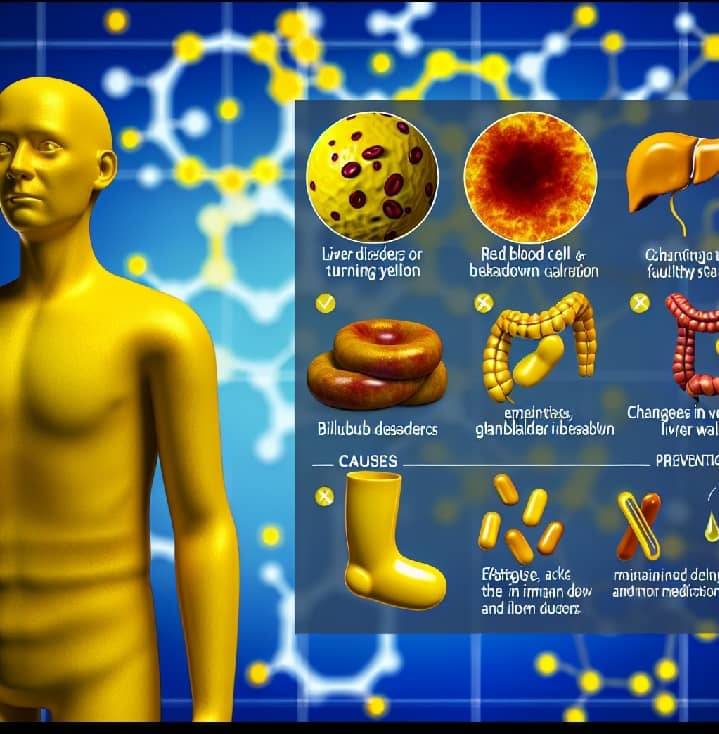UNDERSTANDING YELLOW SKIN: CAUSES, EFFECTS, AND PREVENTION
Yellow skin, medically known as jaundice, is a condition characterized by a yellowish tint to the skin and the whites of the eyes. This discoloration occurs due to an excess of bilirubin, a yellow pigment produced during the breakdown of red blood cells. While jaundice itself is not a disease, it is often a symptom of underlying health issues. Understanding its causes, effects, and prevention can help individuals take proactive steps toward maintaining their health.
CAUSES OF YELLOW SKIN
1. Liver Disorders:
The liver plays a crucial role in processing bilirubin. Conditions such as hepatitis, cirrhosis, or liver cancer can impair its function, leading to an accumulation of bilirubin in the bloodstream.
2. Gallbladder Issues:
Gallstones or inflammation of the gallbladder can obstruct the bile ducts, preventing bilirubin from being excreted properly.
3. Hemolytic Anemia:
This condition involves the rapid breakdown of red blood cells, which can overwhelm the liver's ability to process bilirubin, resulting in jaundice.
4. Genetic Disorders:
Certain inherited conditions, such as Gilbert's syndrome, can affect bilirubin metabolism, leading to mild jaundice.
5. Infections:
Viral infections, such as hepatitis A, B, or C, can cause liver inflammation and subsequent jaundice.
6. Medications:
Some drugs can cause liver damage or interfere with bilirubin processing, leading to yellowing of the skin.
EFFECTS OF YELLOW SKIN
The primary effect of yellow skin is the visible discoloration, which can be alarming and may indicate serious health issues. Other effects may include:
- Fatigue:
Many underlying conditions associated with jaundice can cause fatigue and weakness.
- Abdominal Pain:
Liver or gallbladder issues may lead to discomfort or pain in the abdominal area.
- Dark Urine and Pale Stools:
Changes in urine and stool color can accompany jaundice, indicating issues with bilirubin processing.
- Itching:
Elevated bilirubin levels can cause itching, known as pruritus, due to the accumulation of bile salts in the bloodstream.
PREVENTION OF YELLOW SKIN
While not all causes of jaundice can be prevented, several measures can help reduce the risk:
1. Maintain a Healthy Liver:
Avoid excessive alcohol consumption, maintain a balanced diet, and exercise regularly to support liver health.
2. Vaccination:
Vaccines for hepatitis A and B can protect against viral infections that may lead to jaundice.
3. Medication Awareness:
Consult with healthcare providers about the potential side effects of medications, especially those known to affect liver function.
4. Regular Check-ups:
Routine medical examinations can help detect liver issues early, allowing for timely intervention.
5. Hydration and Nutrition:
Staying hydrated and consuming a diet rich in fruits, vegetables, and whole grains can support overall health and liver function.
6. Avoid Toxins:
Limit exposure to environmental toxins and chemicals that can harm the liver.
CONCLUSION
Yellow skin, or jaundice, is a visible indicator of underlying health issues that require attention. By understanding its causes and effects, individuals can take preventive measures to maintain their liver health and overall well-being. If jaundice occurs, it is essential to seek medical advice to determine the underlying cause and appropriate treatment.


